Followers of Kegress
Conventional two-and multi-axle all-wheel drive vehicles with all the improvements to the design still fall into the category of "cross-country". In the niche of “high-traffic machines” or “all-terrain vehicles”, the first places are tracked. A pair of caterpillars of sufficient width, with a certain length of the bearing surface, proper location of the supporting rollers, leading and guide wheels provides a small pressure on the ground and good traction with the ground, greater tractive effort, confident overcoming various obstacles and turning.
Multipurpose tracked tractor-tractor MT-LBU, USSR. The curb weight of the machine is 10,4 T, the load capacity is 4 T, the engine is diesel, 300 L. with., the speed on the road - to 60 km / h, afloat - 5 km / h, power reserve - 500 km.
The desire for unification of high-traffic vehicles led to the emergence of multi-purpose tracked chassis, suitable for the transport of troops and property, the installation of weapons and special equipment in armored and unarmored versions. A classic example of a caterpillar multi-purpose lightweight chassis was the Soviet armored tractor-tractor MT-LBU with a load capacity of 4,0 tons, the basic vehicle of a unified (and perhaps the most diverse) family of tracked vehicles that are widely used today. One can cite as an example also the Russian MT-SM and MT-T conveyors used for towing various systems weighing up to 15 — 25 tons (with part of the cargo or the calculation being transported on the conveyor itself), mounting missile, gun and missile systems, engineering equipment. The speed of such "samohodov" very decent - up to 70 kilometers per hour.
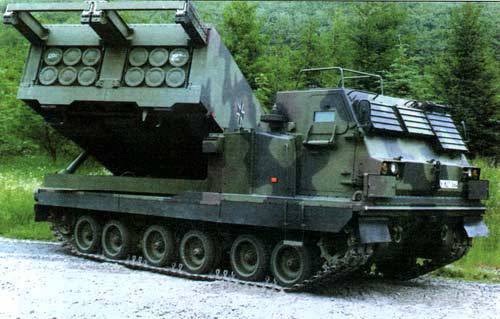
Martin Vought Systems Corporation). MLRS system
In the USA, the M987 (carrying capacity up to 10 tons) was adopted as a multipurpose chassis based on the Bradley BMP with a running gear extended by one roller. On the basis of М987, MLRS MLRS, command and staff vehicles, electronic warfare machine, sanitary and cargo transporters were created.
Most of the transport and special tracked vehicles, as well as combat vehicles, are “shod” in steel tracks consisting of individual links. However, a number of units successfully operated belt unsupported caterpillars. They are lighter, less sensitive to clogging and have greater efficiency on the 10 — 15%, although they have much less strength - even when reinforced with cords and steel crossbars. An example of a car with such tracks is the BR-100 Bombie snowmobile of the Canadian company Bombardier Limited. Its lightweight non-metallic “summer” caterpillar in combination with tires of track rollers gives specific ground pressure of about 0,1 kilograms per square centimeter (this is about six times less than the pressure on the ground of an adult’s foot), and the “winter” one is only 0,08. This snowmobile visited the sands of the Middle East, where he felt quite confident.
Of course, each type of engine has its own advantages and disadvantages, which are often the flip side of advantages. It is not surprising that for many years the search continues for new, original schemes for all-terrain chassis. Moreover, the “all-terrain vehicle” of both military and dual use is a specific machine and is created for special conditions. And in order to meet the requirements of the customer, the designers often have to resort to non-standard solutions. Let's look at some of them.
Heavy multipurpose tracked transporter MT-T, USSR. The curb weight of the vehicle is 25 t, load carrying capacity is 12 — 17 t, trailer weight is up to 25 t, engine is diesel, 710 l. with., speed - up to 65 km / h, power reserve - 500 km.
Caterpillar Turns
“The car ... turned off the road to virgin land, moved the roadside ditch, then walked at considerable speed along soft grassy soil, freely and smoothly overcoming various obstacles,” this is how the test report of the “autosledges” created by the French inventor for Russian roads was recorded. ..
In 1911, in St. Petersburg, “motor vehicles” designed for driving in the snow were tested - “seasonal” vehicles were always relevant for Russia. Against the background of other auto and snowmobiles, Adolf Kegres' car did not differ in originality: it simply attached skis to the front wheels of the car, and the rear wheels were wrapped in chains. Two years later, in the workshop of the imperial garage, Kegres, who, as a French citizen, served as head of the technical part of the garage, tried a different system by installing a crawler instead of the rear wheels. In 1914, Kegress was given the privilege of producing a “car-sleigh moving through endless pressure roller belts.” The Russian-Baltic Carriage Works signed a contract for the installation of its propulsors on their С24 / 30 cars. Kegress propeller consisted of tracked carriages with rubber-caterpillar tracks, loosely fastened instead of wheels on the rear axle half-axle. The kit for the passenger "Russo-Balt" weighed 490 kilograms, but it provided the ground pressure of the entire 0,8 — 1,0 kilogram per square centimeter. On the front wheels put skis. Driving has not changed. During tests on the frozen Neva, the speed reached 60 kilometers per hour. However, the wheels skidded on the track, dirt was stuffed between them, the tracks crawled off and broke. Finalization of the propeller continued.
With the outbreak of war, Kegress did not hesitate to submit his invention to the Main Military Technical Directorate of the Ministry of War. They were interested in him - not even because the offer came from His Majesty's garage, but because it seemed sensible and promising. The caterpillar and semi-caterpillar move was not new: the Russian army, like the British and French, already bought caterpillar tractors as tractors for artillery. By that time, the inventor A.A. had failed. Porokhovschikov with his one-track "All-Terrain Vehicle", which was not a prototype at all tank, to which it is often attributed, and an attempt to create an all-terrain vehicle - an original, but not too successful design. Kegress’s proposal made it possible to turn almost any car into a cross-country vehicle with a relatively small alteration. In August – September 1916, “kegress” was tested by the run between Mogilev and Tsarskoye Selo - the above quote is just from the test report.
As a result, we developed a program for creating the whole “fleet"All-terrain" self-propelled vehicles ", from passenger vehicles to trucks and armored vehicles. An improved caterpillar was made at the Triangle factory. The Putilov factory was ordered half-tracked armored vehicles and the conversion of Russo-Balt, Renault, Packard, and Morse cars.
But other events were approaching - the financial crisis, the strikes at the factories, the revolution. Guessing that nothing good awaits him in the new Russia, Kegress returns to his homeland and again turns to the court, although not to the imperial one. The fruit of his collaboration with the engineer M. Hinstin and the automaker A. Citroen was the “Auto Caterpillar Citroen” 10CV B2, which appeared in the 1921 year. In France, there were no snowy winters, but she owned colonies with extremely bad roads. And although the “Black Raid” of 1924 — 1925 from Algeria to Madagascar served as a test run and a scientific expedition, it was clear that “colonial” transport was being tested. The fate of the people is strange: the keeper’s nephew and the artist A.E. Yakovlev, the son of one of the creators of the first Russian car, EA Yakovlev. Then there was the “Yellow”, trans-Asian “Citroen” raid, after which it was possible to interest the French military. In particular, Citroen Kegress and Panar-Schneider Kegres vehicles were used in the “mobile dragoon” battalions (motorized infantry) and reconnaissance units.
The ideas of Kegress tried to develop Nyberg in Sweden, Kornberg in Denmark, the Italian company Alfa-Romeo, the British Burford and the Crosley. Experiments were made with the Kegress propeller in Germany, but the semi-tracked vehicles preferred a slightly different scheme.
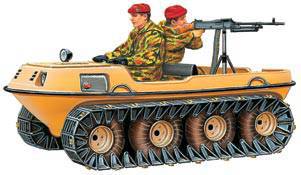 Specialized floating all-terrain vehicle "Argo" in the four-axle version (load capacity 0,5 t). The engine is petrol, 25 l. with., speed over land - up to 35 km / h, afloat - 4 km / h, there is a removable caterpillar. Fig. Mikhail Dmitriev
Specialized floating all-terrain vehicle "Argo" in the four-axle version (load capacity 0,5 t). The engine is petrol, 25 l. with., speed over land - up to 35 km / h, afloat - 4 km / h, there is a removable caterpillar. Fig. Mikhail Dmitriev Yes, and in Russia "kegressy" did not forget. In the 1919 year, the Putilov plant finally began to build semi-tracked armored cars - in total, 6 units were built under the guidance of the technician A. Ermolaev. Interestingly, 25 in October 1919, three such "half-cars" successfully attacked the troops of Yudenich north of the Detsky (Tsarsky) Village, where ten years earlier story "Kegressov." Passenger cars “kegress”, converted from Rolls-Royce, drove Vladimir Lenin between Moscow, Gorki and Kostino. In the middle of the 1920, the French Citroen Kegres was tested, but they were not entirely satisfied. In 1920 — 1930, Professor N.S. Vetchinkin, head of the Sovnarkhoz garage. Gusev, NATI AS engineers Kuzin, B.V. Shishkin, G.A. Sonkin. The semi-tracked NATI-3 on the basis of GAZ-AA was tested in Karakum, Chukotka and Taimyr, served as the basis for the serial GAZ-60 truck. Kegressovskiy move with improved gearing used in the ZIS-22 and ZIS-42, removable kits produced for GAZ-MM and ZIS-5 - these models were called GAZ-65 and ZIS-33. The semi-tracked truck (ZIS-42M artillery tractor) served well during the Great Patriotic War.
Kegress himself died in the year 1943. A year later, the allies on the American semi-tracked armored personnel carriers created by Diamond Motors back in the 1940 year without Kegres, but according to his scheme based on a serial truck with a rubber-metal track mounted on the rear axle and a protective drum in front, were already traveling from France west to east in front of him. These armored personnel carriers of the M2 to the M17 models have become the most popular "kegs".
After World War II, the kegstires seemed to have disappeared from the scene, like all semi-tracked all-terrain vehicles. Nevertheless, the idea of a replaceable light tracked driveway, which the Russian snow inspired the Frenchman, and for the first time implemented in Russia, continued to attract designers. An example of this is the British car Centaur, which was tested in the 1980s. And the American "Matrex" has released a set of rubber caterpillar thrusters with which all the 4 wheels can be replaced by jeeps - all wheel drive is good. It was reported about the testing of such a kit on a HMMVW car, although such sets are not yet visible on army vehicles.
Very very big wheel
The idea to increase permeability by increasing the diameter of the wheel is not just old. With good reason it can even be called ancient. Recall the high-wheel hauls of Transcaucasia and Central Asia, the medieval projects of huge high-wheel chariots. In the XIX century, new opportunities for its implementation, because the tracked engine was still too "young." In 1823, in England, D. Gordon proposed a steam tractor with leading rear wheels with a diameter of 2,7 meters driven by internal rims. At the beginning of the 20th century, the tractor with not so impressive, but still large driving wheels and wide rims did not surprise anyone, including in the army. Interest was caused, say, by the Austrian tractors M.16 and M.17 with surprisingly high wheels. In the 1917 year, the German firm Hansa-Lloyd built an army tractor with two drive wheels with a diameter of 3 meters with a wide steel rim and a front swivel roller.
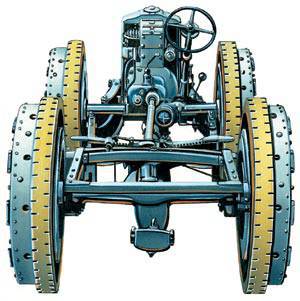 “Fragile” chassis heavy tractor Р4-110 by Italian engineer Pavezi, start of 1930-х. Fig. Mikhail Dmitriev
“Fragile” chassis heavy tractor Р4-110 by Italian engineer Pavezi, start of 1930-х. Fig. Mikhail Dmitriev The success of tracked chassis reduced the interest in high-wheeled vehicles. However, in 1928, a detailed design of a wheeled “ship of the desert” appeared in Germany: a multi-storey building with a length of 48 and height of 15 meters relied on 4 wheels with a diameter of 12 meters with a rim width of 2,5 meters, the range of fuel was 8000 kilometers. The passenger transport variant of the vehicle would provide for the transportation of 100 passengers and 200 tons of cargo; a version of the car “for the police service and defense purposes” was also envisaged. The project author, engineer Bischof, conceived a similar machine back in the 1905 year, serving in Africa the transport of the German colonial troops. In 1916 — 1917, the idea allegedly attracted the attention of the Turkish government, who dreamed of moving its troops across the Arabian desert to the Suez Canal.
Giants were dreaming of designers for a long time. In the USSR in 1936, for example, a professor at the Air Force Engineering Academy named after Zhukovsky G.I. Pokrovsky offered a transpolar passenger-utility all-terrain vehicle with a mass of 1000 tons, albeit a tracked one. In 1938, the engineer of the plant ZIS Yu.A. Dolmatovsky proposed a no less fantastic project of a large transport monocycle "Autosphere ZIS-1001" with a spherical body. The tail support wheels were attached to the beam along with the plumage: on the fly, the plumage would raise the beam and ensure the stabilization of the “Autosphere”.
The idea of high-wheel transport vehicles did not leave designers even later - also in connection with the military development of remote territories. For example, in the USA, the X-NUMX-1956 was tested by a Snow-Buggy car by Le Turno Westinghouse, which had four twin-wheel unsprung wheels with a diameter of about 1957 meters with wide tires of the Giant type and a diesel-electric drive of the “motor- wheel". In the same period, a heavy-duty truck was developed for the supply and maintenance of anti-aircraft and missile defense radars in the Arctic. The train consisted of 3 machines with wheels with a diameter of 12 meter: 3 two-axle 10-ton cargo platforms and two extreme three-axis machines with power plants and crew cabs. The power unit, located on the extreme machines, included three gas turbine engines 13 l. with. (more profitable in the Arctic than piston engines).
In general, for the northern regions, designers often offer schemes for wheeled all-terrain vehicles, including military ones, with tires of large diameter, wide profile and low pressure. An example of this is the experienced Russian "Vector" with the wheel formula 8х8, which interested, as far as we know, the Ministry of Internal Affairs.
"Flexible" ATVs
One of the old ideas of increasing ground maneuverability is a flexible all-wheel drive chassis of articulated links, a sort of "fully active" road train. In 1920-s, Italian engineer Pavezi attracted a lot of attention to his work. In an effort to improve the throughput of wheeled vehicles, he connected the all-wheel drive circuit and the articulated body of the car. The mutual rotation of the front and rear sections of the body relative to each other in three planes ensured constant contact of the wheels with the ground on any terrain (the car seemed to “flow around” the terrain) and reduced the turning radius of the car. The specific pressure on the ground and slipping decreased, the grip improved. Since the wheels did not need to rotate relative to the hull, it was possible to put large diameter wheels (1,2 — 1,7 meters) with a wide rim, without reducing the effective volume of the hull, to place a more powerful engine. The supporting permeability of the machine, that is, the ability to move along weak deformable soils, was successfully combined with the cross-sectional profile (the ability to overcome irregularities and obstacles and fit into the “track”). The Pavezi war machines did not work out very well, but the tractors served in the Italian army. They even became trophies of the Soviet troops during the Great Patriotic War. The British used their own version of the tractor Pavezi, produced under license and improved by Armstrong-Siddeley.
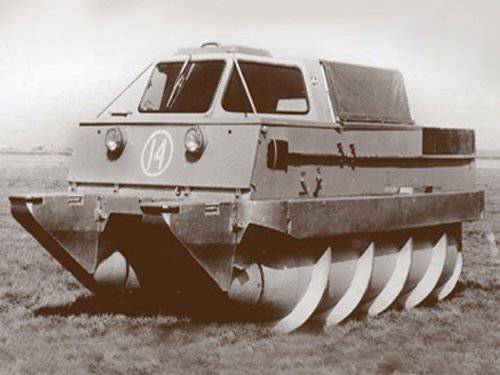
2906 snow and swamp vehicle complex "Blue Bird". Conveyor speed on the road - to 80 km / h, afloat - to 9 km / h.
Interest in such machines was revived in the 1960-ies in connection with the experience of local wars in difficult areas. In the USA, for example, they adopted a whole program of creating military articulated vehicles. Within its framework, created a two-link cargo M520 "Mountain" with the rotation of links only in the horizontal plane, the M561 "Gama Goat" with rotation in several planes, followed by the "Flex Frame", a designer of several active (drive) uniaxial sections, "Dragon -Vagon "and" Twister "with biaxial links, formed in two planes. In Twister (8x8) of Lockheed, each link had its own engine and all-wheel drive, and for greater agility, both pairs of wheels of the front section were made manageable. However, wheeled articulated vehicles were then more useful in the civilian sphere - an example of this is the K-700 “Kirovets” Soviet high-wheeled universal tractor or the Volvo BM DR860 from Sweden. Although the development of "Kirovtsa" at the beginning of the 1960-ies at the Leningrad Kirov plant assumed the possibility of military use.
Articulated circuits are also useful for tracked chassis. These schemes can be divided into two types: trailed, with a sequential arrangement of links, and saddle, when the individual active links are connected by a cargo platform.
In 1950-ies, Engineer Nodwell in Canada proposed an articulated system of two tracked trolleys connected to each other through a hinge and a hydraulic ram. Swedish company "Volvo Bolinders-Muktell" year released in 1961 Bandvagn conveyor (Bv) 202 trailed circuit of two articulated links with rubber tracks, ground pressure 0,1 kilograms per square centimeter and a stroke speed of up to 40 kilometers per hour. Bv-1981 (already represented by Hägglunds), replacing it in 206, with a carrying capacity of up to 2 tons, gained wide popularity in foreign armies - it was bought by the United Kingdom, Italy, Canada, Norway, USA, Finland, Germany - and served as the basis for a rather large family transport and special vehicles, including armored Bv-206S and Bv-210. The power plant is mounted in the front link, the transmission transmits rotation to the caterpillar passages of the front and rear links. The same company created the TL-4 transporter with a tonnage 4 and its armored version BVS-10 - here the tonnage dropped to 2,84 ton.
Floating two-link transporter DT-30P “Vityaz”, USSR. Machine weight - 29 t, load capacity - 30 t, number of seats in the cab - 5, engine - diesel, 710 l. with., speed over land - to 37 km / h, afloat - 4 km / h, the range of fuel - 500 km.
An example of a very successful family of two-link tracked carriers built according to this scheme is the Soviet Vityaz family, developed under the direction of K.V. Oskolkov (later replaced by VI Rozhin). Prototypes created with the participation of 21-th Research Institute, built in 1971 at the Rubtsovsk machine-building plant, and since 1982, the machines were mass-produced by the Ishimbay transport engineering machinery plant. The family includes DT-10P floating conveyors with a load capacity of 10 tons, DT-20P (20 tons) and DT-30P (30 tons) and non-floating DT-20 and DT-30. Two tracked links of the floating “two-link” are connected by an articulated hitch, and the swiveling device with four hydraulic cylinders provides for the forced folding of the machine in the horizontal and longitudinal-vertical planes and mutual rotation in the transverse plane. DT have a multi-fuel diesel and hydromechanical transmission, transmitting rotation to the drive wheels of the caterpillar track of both links. Even with DT-30P with a maximum mass of 59 tons thanks to four rubber-fabric tracked ribbons 1,1 meter in width with a length of 4,5 meter supporting surface and support rollers with spongy chambers, the specific pressure on the ground does not exceed 0,3 kilograms per square centimeter (for comparison, MT-L does not exceed 0,5 kilograms per square centimeter (for comparison, MT-L). 30). Turning "folding" reduces braking losses and damage to the soil. The active second link allows one to overcome the vertical obstacle by raising and “pushing” the front link on it. The displacement of the pontoon hull and skating rinks provides for overcoming water barriers without preparation, and folding the links in a vertical plane facilitates access to the unprepared shore or such a complex operation as the independent return from the water to board the landing craft. Lockable axle and intersink differentials allow the machine to move while maintaining only two tracks. DT-76P can transport a motorized rifle company with light weapons, and it is placed in the cargo compartment of an IL-13 medium military transport aircraft. Non-floating diesel engines are designed for large-sized cargoes up to 6 meters in length (against XNUMX in a floating one) and are made according to the saddle system with a single platform for both links. In addition to cargo transporters, they can also carry combat platforms.
“Vityazi” are intended for the transportation, supply and maintenance of troops in the marshy areas, in Siberia, in the north, and in the Far East, and have worked in the Antarctic expeditions.
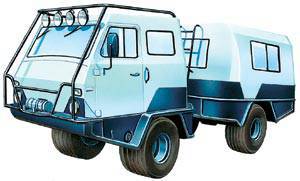 Articulated snow and swamp vehicle SBH-2 “Attack”, Russia. Load capacity - 0,5 t, engine - diesel, 52,6 l. with., speed - up to 45 km / h. Fig. Mikhail Dmitriev
Articulated snow and swamp vehicle SBH-2 “Attack”, Russia. Load capacity - 0,5 t, engine - diesel, 52,6 l. with., speed - up to 45 km / h. Fig. Mikhail Dmitriev The Canadian Husky-30 (8 tons) is close to the load carrying capacity of the DT-36,3, but this is a commercial vehicle with a speed of up to 14,5 kilometer per hour. As you can see, two-link tracked vehicles are quite naturally created in countries with a harsh northern climate. However, South-East Asia entered into the business - the Singapore company Singapore Technology Kinetics, using American and Canadian units, created a two-link ATTS conveyor with a tonnage of 4,7 tons and a speed of up to 60 kilometers per hour. And it is no coincidence that the “two-links” have already gone beyond the “snowy northern latitudes”. The same British have already dragged Swedish transporters to Iraq with them and are using it there, not without success. Yes, and the Russian DT-10P has found application in Chechnya. According to the experience of military operations in the North Caucasus, the development of means for reducing acoustic and thermal visibility and local protection was continued, which were presented in the new family of “two-linkers” (under the slogan “Omnipresent”) with a more powerful engine.
Canadian Husky-8
Demand for machines of this type will apparently be expanding, with machines with a carrying capacity of up to 4 tons causing the greatest interest, with the possibility of movement afloat, the presence of means of protection while maintaining the travel speed. Thus, according to the requirements developed by the 21-m Research Institute of the Russian Ministry of Defense, DT-4P “Icepick” with a tonnage of 4 tons and armored DT-3PB on 3 tons were developed at the Rubtsovsk machine-building plant.
But the wheeled articulated chassis continues to attract attention. The Iset Yekaterinburg company presented the “Attack” two-link snow and swamp-going vehicles of the 4x4 wheel formula with low-pressure tires and a military jeep carrying capacity.
Spherical exotic
The creators of all-terrain vehicles periodically return to such externally exotic schemes as spherical or hemispherical wheels - they are attracted by the “automatic” regulation of the bearing surface area depending on the ground — wheels with “active” segments around the circumference, a combination of wheel propulsion with walking, crawler tracks "Roller" and so on. True, in the military service of such machines has not yet appeared.
They have been experimenting with such combinations of wheeled and caterpillar moves, when one of them is being lifted. Many such experienced chassis were built in 1920 — 1930's. An example of a later return to the idea is the “19 object” chassis of the Altai Tractor Plant design bureau, tested in the middle of 1960's, or the BVSM-80 R.N. high-speed all-terrain vehicle. Ulanova 1983 of the year. Both the remaining chassis, which were experienced, were the 4x4 wheel formula vehicles with a small-sized tracked propulsor lowered onto the ground to increase all terrain.
Floating two-link transporter DT-10PM "Omnipresent", Russia. Load capacity - 10 t, engine - diesel, 810 l. with., speed over land - to 40 km / h, afloat - 5 — 6 km / h.
We go on the screw
The idea that the auger — the famous screw of Archimedes — can serve not only to supply water, minced meat, and the like, but also to serve as a mover, did not arise yesterday either. So, in 1920, in the USA, engineer F.R. The bar built a “snow engine” to move on snow and ice, setting four worm drums instead of wheels or tracks on a tractor. Soon, a similar engine was tested on the Fordson tractor and the Armstid car. The diameter of the drums provided a low specific pressure, and the rotation of the endless screw propelled the machine even over the most viscous soil. Then the augers (rotors) began to play the role of floats: the resulting amphibians were fine on small marshy reservoirs, rivers with muddy or sandy banks. To the idea of a shnekokhoda returned repeatedly. During World War II, the American army experienced several augers in Alaska. In 1960, the Marsh Scrue Embbien and RUC augers were tested in the same US, as well as the Twilliter with two augers and a wheel drive that was removed during the transition to weak ground.
In the USSR, at the Gorky Polytechnic Institute in 1970, a rotor-screw ice-milling machine was built on the basis of GAZ-66 units, and a Laika ski-screwing snowmobile was developed there. But much more interesting was the search and rescue complex of machines that appeared in the same years, developed by the Special Design Bureau of ZIL for the space search and rescue service, and there is no need to prove the military significance of space services. Note that a complex was developed under the guidance of V.A. Grachev - an outstanding designer, who is called the "Queen of the automotive industry." The 1975 complex, or Blue Bird, adopted in 490, included various types of vehicles: two wheeled floating all-terrain vehicles (passenger 49061 tonnage 2,02 tons and 4906 transport 3,4 tonnes) and rotary 2906 snow rotary swamp vehicle (29061). Conveyors have a four-wheel drive all-wheel drive chassis (6x6) with independent torsion bar suspension and evenly spaced axles, displacement hull, controlled front and rear wheels. Their equipment includes a radio navigation system and a direction finder. But such cars will not be everywhere. Therefore, on a cargo conveyor equipped with a crane boom, a snow and swamp-going vehicle with a carrying capacity of 0,375 tons is transported. It can also swim, but its main purpose is to move along swampy and virgin snow of any depth. The entire complex is transported entirely by Il-76, each machine separately - by Mi-6 or Mi-26 helicopter. Well, “cross-country vehicle” is really a complex concept.
- Semen Fedoseev
- http://www.vokrugsveta.ru"rel =" nofollow ">http://www.vokrugsveta.ru
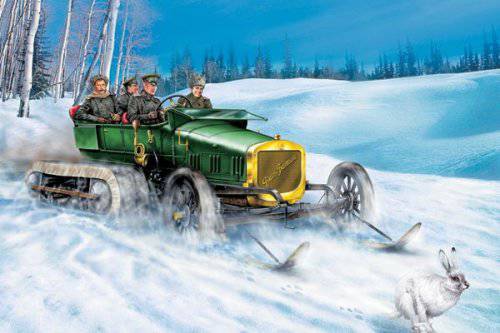
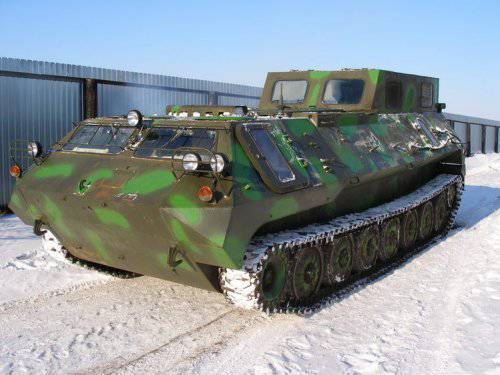
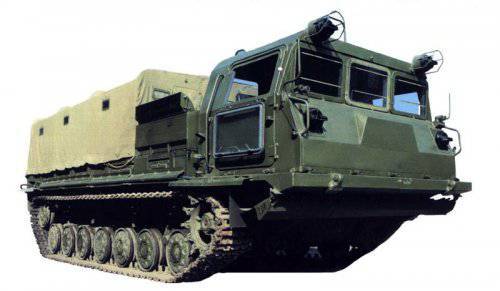
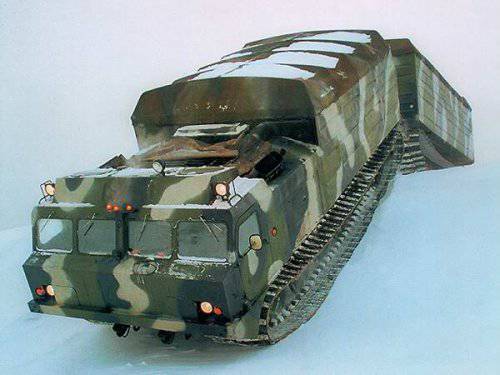
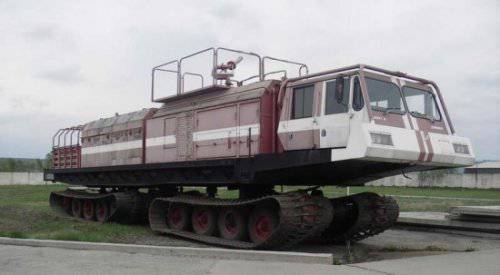
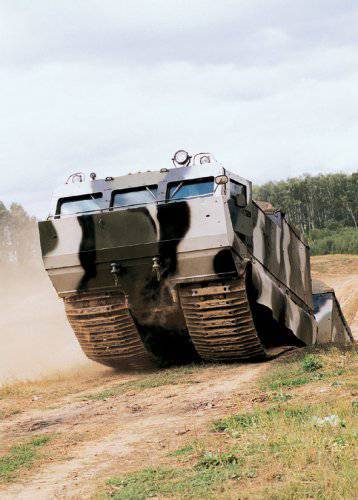
Information